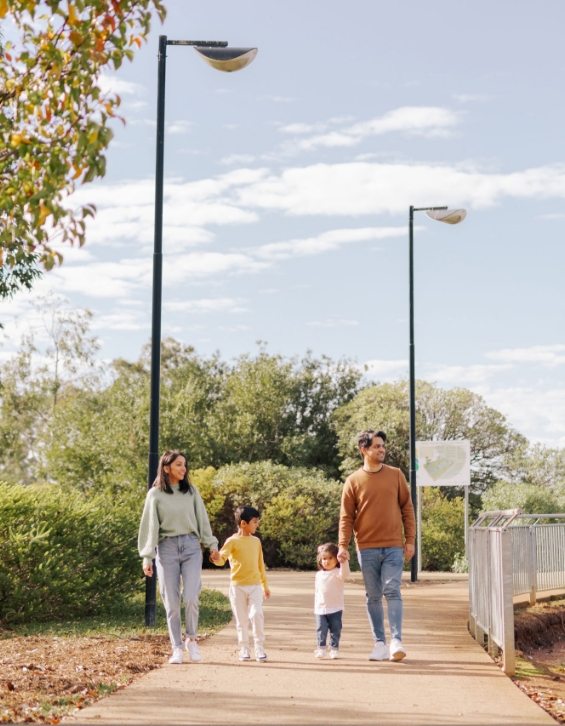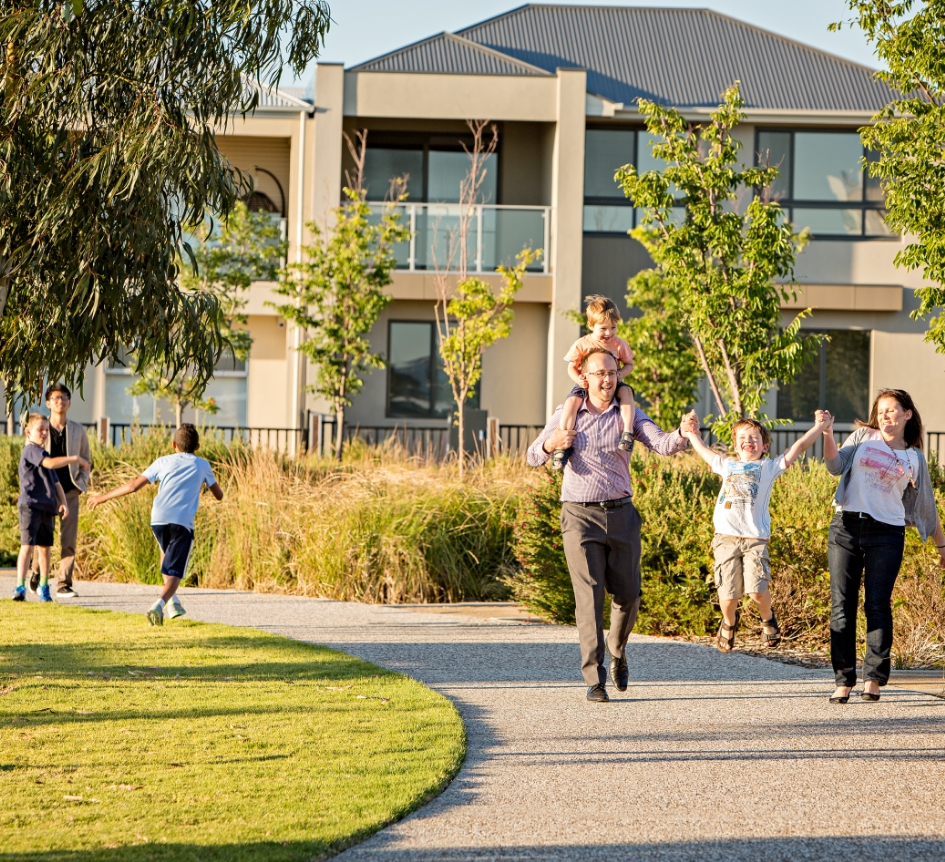Part 1: How should Greater Adelaide grow?
The GARP will establish a 30-year vision for the Greater Adelaide region. It will identify where people will live and work, how they move around, and where they will access services. The GARP will also align with the State Planning Policies (SPPs), which are the framework for orderly development across the State to account for a range of environmental and natural resource constraints including climate change.

Strategic foresight and global trends
While the Commission relies on traditional tools to plan for long term growth and change, it has also explored ideas about the future, and plausible scenarios, to better prepare and plan for change.
Recent rapid changes - a global pandemic, social and political uncertainty, remote work, and the rise of digitisation - require us to look at different possible futures through scenario planning.
The Commission, along with the Department of Premier and Cabinet (DPC), industry experts and thought leaders, have considered major trends and drivers of change that will shape the future of Greater Adelaide.
From this process, the Commission proposes four outcomes to guide the discussion about how Greater Adelaide should grow. Each outcome is described on the following pages and linked to the trends and drivers of change most relevant to land use planning in Greater Adelaide.
In this Discussion Paper, you will be asked questions about where people could live in the future, as zoned urban land is taken up over the next 15-20 years. Options about where future populations will live are based on opportunities and constraints mapping. Much of this mapping is derived from the 16 SPPs:

1. Integrated planning

2. Design quality

3. Adaptive reuse

4. Biodiversity

5. Climate change

6. Housing supply and diversity

7. Cultural heritage

8. Primary industry

9. Employment lands

10. Mineral and energy resources

11. Strategic transport infrastructure

12. Energy

13. Coastal environment

14. Water security and quality

15. Natural hazards

16. Emissions and hazardous activities
A greener, wilder and climate resilient environment
The trends and drivers

Climate impacts and biodiversity loss

Decentralisation

Food and water security

Liveability

Changing mobility systems
Why this is important
Our future prosperity, the liveability of our cities and towns, the health and wellbeing of our communities and the resilience of our built and natural environment all depend on how well we adapt to and mitigate the impacts of climate change. The extreme effects of climate change on urban environments are well established. South Australia is becoming hotter and drier, and experiencing extreme events like heatwaves, bushfires and flooding, which are increasing in frequency and intensity.
Since the 1950s, hot days and heatwaves have become hotter and more frequent. Heavy rainfall events have also increased in frequency and intensity. Projections suggest temperatures will rise as much as 2.1 degrees Celsius above the long-term average by 2050.2 It is expected by 2030 there will be an additional 14 days above 40 degrees every year.3
In 2022, South Australia joined other jurisdictions around the world to declare a climate emergency, reaffirming the State's commitment to building science-based policies to prepare for the realities of climate change. And we signalled the State's commitment to act.4
The projected changes to our climate are described in the Guide to climate projections for risk assessment and planning in South Australia5.
A more equitable and socially cohesive place
The trends and drivers

Social inequality

Liveability

Reconciliation, including voice, treaty, truth

Housing availability and affordability

Climate impacts and biodiversity loss
Why this is important
Equity is when everyone has access to opportunities necessary to satisfy essential needs, advance their wellbeing, and achieve their full potential.
Every person, no matter where they live, should have access to transport, employment, healthcare, shops and services and high-quality green space. But many do not. Inequality has been rising sharply in English-speaking countries over the past 30 years.6
Inequality shows within cities and towns in several ways. The quality of open public spaces greatly affects opportunities for recreation, social connection and cultural enrichment. These important factors combine to affect the health and wellbeing of individuals and communities.7 Convenient access to services, more transport options, and better environmental design mean living costs are lower in quality neighbourhoods than in socially isolated ones. Carefully planned neighbourhoods tend to be greener, safer, healthier, more prosperous, and better serviced.
While the purchase price of a home in an established infill area is often higher than in a greenfield development, the commuting costs and travel time costs can be 30% (middle ring suburb), and even up to 60% (CBD) less than for greenfield areas. In addition, households in outer-suburban areas are not only likely to travel further to access services such as education, shops, and recreation, but they are also more vulnerable to car-related costs such as increasing petrol prices.8
Social infrastructure is critical for communities. It connects people to services and opportunities to enhance their quality of life. Social infrastructure comprises the facilities, public space networks, and services that support individual and community wellbeing. However, the challenges of delivering this across all Australian cities are complex and increasing. Government health expenditure per person is expected to double over the next 40 years. School infrastructure across the nation is ageing, and not keeping pace with demand in fast-growing cities.9
A strong economy built on a smarter, cleaner, regenerative future
The trends and drivers

Digitisation

Decentralisation

Automation and advanced manufacturing

Workforce, skills and migration

Changing mobility systems
Why this is important
South Australia's economy has changed over the past 30 years. While manufacturing remains the state's largest employer, the share of the state's Gross State Product (GSP) attributable to manufacturing has declined from 16% in 1990 to about 6 percent in 2019. By comparison, the health care and social assistance sector has grown from just over 5 percent to 11 percent over the same period.10
The South Australian Economic Statement11 sets out a clear vision for the state's economic future. South Australia wants to be known as an ambitious and capable state that embraces technology and drives innovation. Rapid advancements and innovation in digitisation, automation, and cleaner circular economy industries will continue to expand South Australia's industrial capabilities. These advances will enable businesses to take new products, services, and knowledge to the world.
The government acknowledges targeted population growth is necessary to support the state's economic transformation, to build skills and meet current and future workforce needs. South Australia wants to use its green economy credentials to attract entrepreneurs and job creators, which in turn will create new pathways to skills and jobs.
The vision for a smarter and cleaner economic future changes the requirements for employment lands. Traditional industries will still require dedicated land separated from other land uses and near freight routes. But growth in cleaner and quieter industries is expected to increase demand for inner suburban employment lands too.12 This will create opportunities for people to work nearer home. Evolving knowledge and services economies will also enable more remote working, reducing demand for traditional office or commercial space.
Along with changes in how and where people will travel to and from work, autonomous vehicles and micro-mobility vehicles (e.g. e-bikes, e-scooters) will also influence daily travel patterns. Over the next 30 years the pace of change will increase as technology and digital connectivity increase electric and autonomous vehicle participation in the shared economy. The accessibility and affordability of this technology, and the facilitation of car and ride sharing could lead to demand shifts from public transport back to cars, which in turn might increase congestion.
These transitions will require new long term thinking about how roads are designed and used, and how carparking, public transport, and active transport infrastructure are provided.
A greater choice of housing in the right places
The trends and drivers

Housing availability and affordability

Liveability

Societal inequality

Climate impacts

Decentralisation
Why this is important
A range of economic and policy factors drives housing affordability. The planning system can help meet future demand by making sure there is enough land for new houses, coupled with well-timed infrastructure, and flexibility in zoning and policies to allow for housing diversity.
Projections tell us we will need to plan for another 300,000 homes over 30 years. We also need to understand the housing needs and aspirations of our various communities, our changing demography, and changing market preferences over this period. Policy settings need to deliver greater choice across dwellings and locations, and diverse, adaptable dwellings that cater for changes within a household over time.
In the last decade, new housing products have emerged, including a new generation of multi-level apartments in urban corridors and larger urban infill sites. But the overall supply of new housing remains focussed on detached housing, reinforced by the introduction of the Federal Government's Home Builder Grant in 2020. Census data reveals that the ongoing trend for detached dwellings - typically with three or more bedrooms - does not necessarily match the needs of increasing numbers of smaller households. We need to encourage a broader range of dwelling types and dwelling sizes.
The Australian Housing Aspirations survey showed that while the preference for detached housing remains strong, many households across age cohorts and income groups want apartments or townhouses in wide-ranging locations.13 Extensive housing studies across Australia reveal similar findings. The Grattan Institute, Perth and Peel, and Auckland studies all concluded that there are too few semi-detached houses and apartments in their respective cities. Consistently, these studies show that housing preferences are primarily driven by: (i) convenience and access, (ii) the local environment, (iii) local amenities, (iv) proximity to facilities, (v) safety and security, and (vi) dwelling design and features. This makes housing choice across all locations an essential component of the GARP.
In October 2021, the Commission initiated the Future Living Code Amendment to facilitate greater choices for people who want to downsize and stay in the same area, or enter the market on a smaller footprint. The model proposes new co-housing forms and future living models in established areas. We need to explore other housing forms and models to provide greater choices across all our communities.

For discussion
What do you think of the four outcomes guiding how Greater Adelaide should grow? Are there any other outcomes the commission should consider?
What other major trends and drivers might shape the future of Greater Adelaide? How should a land use plan address these trends and drivers?

- 2 climate-change-action-plan-2021-2025.pdf (environment.sa.gov.au) (pg8)
- 3 data.environment.sa.gov.au/Content/Publications/New%20climate%20change%20projections%20for%20SA%20maps%20and%20findings%202022.pdf
- 4 www.environment.sa.gov.au/goodliving/posts/2022/06/climate-emergency-declaration-south-australia
- 5 Department for Environment and Water - Latest climate projections for SA
- 6 Income Inequality - Our World in Data
- 7 Social determinants of health (who.int)
- 8 Microsoft Word - October Draft Report v6 (planning.vic.gov.au)
- 9 https://www.infrastructureaustralia.gov.au/sites/default/files/2021-09/2021 Master Plan_1.pdf
- 10 plan.sa.gov.au/state_snapshot/land_supply/land_supply_reports_for_greater_Adelaide/employment_land_supply
- 11 SA-Economic-Statement.pdf (premier.sa.gov.au)
- 12 Land Supply Report for Greater Adelaide - Employment Land (plan.sa.gov.au) (pg13)
- 13 The housing aspirations of Australians across the life-course: closing the 'housing aspirations gap' (ahuri.edu.au)
